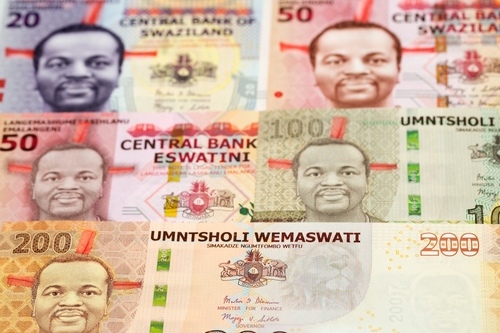When traveling to or conducting business with Eswatini, understanding their currency, the Swazi Lilangeni (SZL), is essential. Whether you’re a tourist preparing to explore the beauty of Eswatini or a business professional transacting across borders, this guide will help you get acquainted with the Swazi Lilangeni. Here, we’ll cover its history, value, usage, and the practical aspects of handling this currency.
What Is the Swazi Lilangeni?
The Swazi Lilangeni (plural: Emalangeni), symbolized as SZL, is the official currency of Eswatini, a landlocked country in Southern Africa. The currency was first introduced in 1974, replacing the South African Rand (ZAR) as Eswatini’s official tender. However, the South African Rand is still accepted in Eswatini, making it a dual-currency economy.
Currency Code: SZL
Symbol: E (for singular) or L (when referring generally)
Subdivision: 1 Lilangeni = 100 cents
The Central Bank of Eswatini is responsible for issuing and managing the Swazi Lilangeni. The currency is available in both coin and note forms, providing versatile options for transactions.
How Is the Swazi Lilangeni Related to the South African Rand?
One of the most distinctive features of the Swazi Lilangeni is its 1-to-1 pegged relationship with the South African Rand (ZAR). This fixed peg means that 1 SZL is always equal to 1 ZAR.
This close monetary relationship exists because Eswatini is a member of the Common Monetary Area (CMA), which also includes South Africa, Namibia, and Lesotho. Thanks to this arrangement:
- The Rand is widely accepted as legal tender in Eswatini.
- However, the Swazi Lilangeni is not accepted in South Africa for transactions, so it’s vital to exchange any unused currency before leaving Eswatini.
Banknotes and Coins of the Swazi Lilangeni
To ensure you’re prepared with the right denominations, here’s a breakdown of the Swazi Lilangeni’s coins and banknotes:
Coins
- 1 Cent
- 2 Cents
- 5 Cents
- 10 Cents
- 20 Cents
- 50 Cents
- 1 Lilangeni
- 2 Emalangeni
- 5 Emalangeni
Banknotes
- E10
- E20
- E50
- E100
- E200
Each note features significant historical figures and cultural icons that represent Eswatini’s heritage and values. The notes are designed with advanced security features, including watermarks, color-shifting ink, and anti-counterfeiting measures.
Why Is the Swazi Lilangeni Important?
The Swazi Lilangeni holds more than monetary significance; it reflects Eswatini’s economic ties, culture, and political sovereignty. It also facilitates the country’s participation in regional and global trade.
Key Uses
- Tourism
Visitors to Eswatini rely on the Lilangeni for everything from buying groceries to paying for accommodation. If you’re traveling to the country, understanding the currency ensures smoother transactions.
- Trade and Business
For entrepreneurs and businesses operating in or with Eswatini, the Lilangeni is key for regional trade, especially with South Africa, where economic integration is high.
- Cultural Identity
The artwork and imagery on the Swazi Lilangeni depict Eswatini’s traditional customs, reinforcing its importance in maintaining national pride.
Exchange and Usage of the Swazi Lilangeni
Travelers often wonder about the best way to exchange and use the currency when visiting Eswatini. Here are several practical tips:
1. Where to Exchange Money
-
- Airports: Exchange counters at airports often offer convenience but may come with higher fees.
- Banks: Opt for local banks in Eswatini for better exchange rates.
- Forex Bureaus: These specialize in currency exchanges and are widely available in cities like Mbabane and Manzini.
Avoid exchanging money on the illicit market, as the exchange might be illegal or involve counterfeit notes.
2. Using ATMs
ATMs are widely available in urban areas but may be limited in rural regions. Major South African banks like FNB and Standard Bank operate in Eswatini. If you’re using foreign cards, ensure they are compatible with international networks like Visa or Mastercard.
3. Credit/Debit Card Use
Credit and debit cards are accepted in many establishments, especially for larger purchases or at national chains. However, carrying some cash remains essential for small transactions, particularly in rural areas or markets.
4. Tipping Culture
Tipping is customary in Eswatini. Whether you’re dining at a restaurant or touring local attractions, leaving a small tip in Lilangeni or Rand is a common practice.
How to Maximize Value with the Lilangeni
If you’re looking to make budgeting in Lilangeni easier, follow these tips:
- Compare Exchange Rates before converting your currency. Rates for SZL vary, so do your research.
- Avoid Currency Conversion Fees: Some banks and payment processors may charge extra fees for foreign transactions.
- Spend Wisely: Since the SZL cannot be used outside Eswatini, aim to limit the amount of local currency you plan to withdraw or exchange.
For significant savings and convenience, travel-focused apps or pre-conversion calculators (like the ones on Remitly) are great tools.
FAQs About the Swazi Lilangeni
Is the Swazi Lilangeni a strong currency?
The Lilangeni’s strength is closely tied to the South African Rand due to its 1-to-1 pegged exchange rate. Its long-term strength often mirrors South Africa’s economic performance.
Can I use South African Rand in Eswatini?
Yes, the Rand is widely accepted as legal tender in Eswatini. However, the reverse is not true, as the Swazi Lilangeni cannot be used outside the country.
Do I need to exchange leftover Lilangeni before leaving Eswatini?
Yes. Since the Lilangeni has limited usage outside Eswatini, it’s advisable to exchange it for your home currency or South African Rand before leaving.
